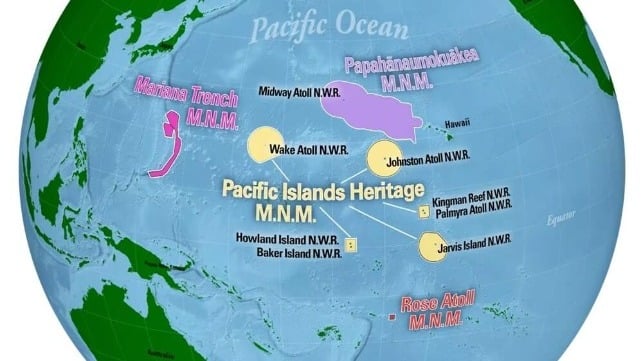Federal Court Suspends Fishing in Pacific Islands Nat'l Monument

A federal district court has vacated a letter from NOAA Fisheries that told tuna boats to fish within the previously-protected Pacific Islands Heritage Marine National Monument. In a summary judgment, U.S. District Judge Micah Smith found that he had little choice but to rule that the letter was legally invalid, as NOAA didn't defend its merits in court.
In mid-April, President Donald Trump signed a proclamation to open up the Pacific Islands Heritage Marine National Monument to commercial fishing, allowing U.S.-flagged tuna boats to pursue their catch within an area covering more than 400,000 square miles of the U.S. exclusive economic zone. The area has been closed to fishing ever since the national monument was expanded by former President Barack Obama in 2014. The monument covers nearly half of the U.S. EEZ in the Pacific Islands, and the administration argued that the restrictions hurt the interests of tuna fishermen operating out of American Samoa.
After the president's proclamation, NOAA Fisheries took swift action to implement the order. It dispatched a letter to existing U.S. tuna permit holders to inform them that in certain areas of the monument, commercial fishing was "no longer prohibited." The letter was not published in the Federal Register, and the agency did not treat it as a formal rulemaking process. Some commercial fishing operators accepted the letter, and began actively fishing within the monument.
The Magnuson-Stevens Act and the Administrative Procedure Act require public input for federal agency rulemaking, and previous rulemakings about fishing inside the monument area had followed this process. But NOAA's letter suggested that a proclamation from the president was all that was needed to change a federal rule. A group of Hawaiian environmental and cultural groups filed a lawsuit, arguing against both the decision and the procedures NOAA used to enact it.
On August 8, Judge Smith found that the letter was invalid because NOAA Fisheries skipped the required public input procedures for federal rulemaking, then opted not to defend that decision in court.
"The government has chosen not to defend on the merits of notice-and-comment rule making," Smith wrote. "The court therefore is not asked to make a judgment call: the government has chosen to forfeit any argument that notice and comment procedures were unnecessary."
In vacating NOAA's letter, Smith determined that commercial fishing is still banned within the national monument - at least, until NOAA Fisheries starts over and conducts a formal rulemaking with a notice-and-comment process. The letter is no longer accessible on NOAA's website.
"The law guarantees a process where we can advocate for protecting the generations of our children’s children who are yet to be born," said Solomon Kaho'ohalahala, a founding member of Hawaiian native cultural group Kapaa. "The Fisheries Service cannot ignore our perspectives as the native people who belong to the islands and to the ocean that surrounds us."
